Consulting
| Cantos Para Todos | Adornos
Mariana | Howard Piano Service
| Janeen's Embroidery | Carlene's
Graphic Design | Howard Family
| Milagro Band |
Romero Band | Strings
|
Article about the presentations
| Teacher Development in ESL Indian
Education | September
| October | November
| | November | December
| January -February | March
-M ay |
ESL Methods Workshop
Roy E. Howard, Ph.D.
Gallup Graduate Studies Center
Western New Mexico University
Using music in
ESL, Volume III
1. Will you still love me?
Ideas for using literature to teach both the parents and
the students. pp. 2-4
2. Helping your child learn history
Ideas for teaching from the Internet pp. 5-8
3. Indian Education Contacts on the Internet
Web pages and e-mail address
4. Empowerment of Students with Songs, Stories,
and Skits
Explains the secrets of
Dr. Howard’s story telling techniques
Parenting Skills
Responding when a child gets in trouble at home
a lesson for a workshop for parents
J. Janeen Howard
1. Objectives:
a. Parents will make a list of possible reactions when a child
gets in trouble at home.
b. Parents will give examples of ways to show increased love after
addressing problem behaviors.
“Today you will be making a list of possible reactions to
situations with your own children in your home. You will also
give examples of ways to demonstrate increased love after addressing
the problem behavior.”
2. Setting the scene: “After the lesson today, you will describe
a situation in which your child got into trouble at home and relate
how you reacted or might have reacted”.
3. Story. “I am going to read parts of a story that will
give you ideas for addressing problem behaviors at home.”
Will you Still Love Me?
4. Discussion. Discuss the types of reactions the person in the
story had including
a. making the boy responsible for his actions by helping him repair
the damage
b. finding alternative activities
c. showing an increase of love after addressing the problem.
5. Application. “Now tell me again what your child might
do at home to get into trouble. Tell me some ways to address the
problem, using ideas from the story.”
6. Summary. “I can tell from your responses that you have
some new ideas on how to react to your children at home.”
7. Assignment. “For one week write in a journal the behaviors
of your children and your reaction.”
Social Skills
Alternatives when a child gets in trouble at home
Learning responsibility for actions
1. Objectives:
a. Children will make a list of possible adult and child reactions
when a child gets in trouble at home.
b. Children will give examples of ways to accept love after addressing
problem behaviors with adults.
“Today you will be making a list of possible reactions to
situations in your home. You will also give examples of ways to
accept increased love after addressing the problem behavior.”
2. Setting the scene: “Today you will describe a situation
in which you got into trouble at home and relate how adults reacted
or might have reacted”.
3. Story. “I am going to read parts of stories that will
give you ideas for addressing problem behaviors at home.”
a. Discuss Alexander’s Terrible, Horrible, Awful, Very
Bad Day
1. His negative attitude
2. His selfish attitude
b. Read Will you Still Love Me?
1. What the boy said he might do, show pictures. How would the
parents or adults in your life react if you did something like
that? How does it make you feel?
2. Ask the question, Will you still love me? in the context of
his examples of bad behavior. Discuss the question of whether
adults still love you when you do something that upsets them.
How does it make you feel?
3. Read the father’s response and discuss.
The father taught responsibilty for the actions
How would the boy respond to this treatment?
How would you feel if you were treated like this?
4. Discussion. Discuss the types of reactions the person in the
story had including
a. making the boy responsible for his actions by helping him repair
the damage
b. finding alternative activities
c. showing an increase of love after addressing the problem.
5. Application. “Now tell me again what you might do at home
to get into trouble. Tell me some ways to address the problem,
using ideas from the story.”
6. Summary. “I can tell from your responses that you have
some new ideas on how to involve adults in your actions and feelings
at home.”
7. Assignment. “For two days write in a journal your behaviors
and your parents’ reaction.”
Social Skills
Alternatives when a child gets in trouble at home
Learning responsibility for actions
1. Objectives:
a. Children will make a list of possible adult and child reactions
when a child gets in trouble at home.
b. Children will give examples of ways to accept love after addressing
problem behaviors with adults.
“Today you will be making a list of possible reactions to
situations in your home. You will also give examples of ways to
accept increased love after addressing the problem behavior.”
2. Setting the scene: “Today you will describe a situation
in which you got into trouble at home and relate how adults reacted
or might have reacted”.
3. Story. “I am going to read parts of stories that will
give you ideas for addressing problem behaviors at home.”
a. Discuss Alexander’s Terrible, Horrible, Awful, Very
Bad Day
1. His negative attitude
2. His selfish attitude
b. Read Will you Still Love Me?
1. What the boy said he might do, show pictures. How would the
parents or adults in your life react if you did something like
that? How does it make you feel?
2. Ask the question, Will you still love me? in the context of
his examples of bad behavior. Discuss the question of whether
adults still love you when you do something that upsets them.
How does it make you feel?
3. Read the father’s response and discuss.
The father taught responsibilty for the actions
How would the boy respond to this treatment?
How would you feel if you were treated like this?
4. Discussion. Discuss the types of reactions the person in the
story had including
a. making the boy responsible for his actions by helping him repair
the damage
b. finding alternative activities
c. showing an increase of love after addressing the problem.
5. Application. “Now tell me again what you might do at home
to get into trouble. Tell me some ways to address the problem,
using ideas from the story.”
6. Summary. “I can tell from your responses that you have
some new ideas on how to involve adults in your actions and feelings
at home.”
7. Assignment. “For two days write in a journal your behaviors
and your parents’ reaction.”
Kirk Winters & Peter Kickbush
U.S. Department of Education
kirk_winters@ed.gov peter_kickbush@ed.gov
Helping Your Child Learn History
WE HAVE SO MANY things to be thankful for, and we want to take
this opportunity to thank you, school bilingual leaders, for making
our Consortium possible.
Many of us will have a bit more time, over the next few days,
to enjoy our families. If you are interested in fun learning activities
to do with children, you'll find more than 150 of them in the
"Helping Your Child" series, available on the U.S. Department
of Education Online Library: http://www.ed.gov/pubs/parents.html
Below are a few activities from one title in the series, "Helping
Your Child Learn History."
~~~~~~~
*Other titles* in the series include Helping Your Child...
- Get Ready for School (birth through age 5)
- Succeed in School (children ages 5 - 11)
- Learn to Read (children from infancy through age 10)
- Learn Math (children ages 5 - 13)
- Learn Science (elementary school children)
- Learn Geography (elementary school children)
- Como ayudar a sus hijos a aprender ciencia
- Use the Library
- Como ayudar a sus hijos a usar la biblioteca
- Learn Responsible Behavior
- Improve in Test Taking
- Learn to Write Well
- Helping Your Child With Homework
Note: In addition to trying these activities with children in
your own family, you are welcome to download & share with
other parents & teachers, or even distribute more broadly
(perhaps through your PTA). This information is "in the public
domain." All we ask is a statement crediting the U.S. Department
of Education and, in this case, th Office of Educational Research
& Improvement, which produced the series. For additional materials
for parents, including information about the Partnership for Family
Involvement in Education, please see: http://www.ed.gov/Family/
**************************************************
Activities from "Helping Your Child Learn History"
Written by Elaine Wrisley Reed (For Ages 4-11)
May 1993
**************************************************
TIME MARCHES ON
~~~~~~~~~~~~~~~
The stories of history have beginnings, middles, & ends that
show events, & suggest causes & effects. A personal timeline
helps your child picture these elements of story.
What you'll need
~~~~~~~~~~~~~~~~
* Paper for timeline
* Colored pencils
* Crayons
* Shelf paper or computer paper
* Removable tape
* History log (optional)
What to do
~~~~~~~~~~~
1. Draw on a piece of paper, or in the history log, a vertical
line for the timeline. Mark this line in even intervals for each
year of your child's life.
2. Help your child label the years with significant events, starting
with your child's birthday.
3. Review the timeline. Your child may want to erase & change
an event for a particular year to include a more memorable or
important one. (Historians also rethink their choices when they
study history.)
4. For a timeline poster, use a long roll of shelf paper or computer
paper. For a horizontal timeline, fasten it to the wall up high
around the room using removable tape so that your child can take
it down to add more events or drawings. For a vertical timeline,
hang it next to the doorway in your child's room. Start with the
birthday at the bottom. Your child can begin writing down events
& add to it later.
5. For older children, have them do a timeline of what was life.
To begin, they can use the library's collection of newspapers
to find & record the headlines for each of their birthdays.
---------------------------------------------------
What is the most significant event on the timeline? What effects
did the event have on your child's life? What are the connections
between the events in your child's life & world events at
the time?
---------------------------------------------------
SCHOOL DAYS
~~~~~~~~~~~
Did you ever wonder why there is no school in summer? Or why there
might be soon?
What you'll need
~~~~~~~~~~~~~~~~
* Map of the United States
* Crayons or colored pencils
* History log
What to do
~~~~~~~~~~
1. Talk about what school was like when you were a child. Include
how schools looked physically (e.g., one-room schoolhouse or campus?);
what equipment teachers used (e.g., chalk boards or computers?);
what subjects you studied; what choices you faced (e.g., transportation
to & from school, extracurricular activities); & favorite
teachers.
2. Talk about what school was like 50 or 100 years ago. Ask your
librarian for help in looking this up, & talk to older relatives.
Include the history of work in America & how this affects
schooling. For example, when America was an agricultural society,
children were needed to help plant & harvest crops. It was
common then that children didn't go to school every day, or in
the summer.
Have children draw a variety of crops or animals raised in the
United States, including those grown in their own state or neighborhood.
They can draw either right on the map or on paper that they will
cut & paste on the appropriate state.
The map can be traced from an atlas in the library or from a geography
book. Talk about when various crops are planted & harvested,
& the effects of growing seasons on migrant worker families.
Talk about another change in work in America & how it affected
schooling. For example, when America was becoming a manufacturing
economy, during the Industrial Revolution, laws were made against
child labor & for mandatory schooling.
Help your child talk about how the work of parents in America
today affects schooling, for example, the need for afterschool
programs.
3. Imagine what school will be like in the future. Younger children
may want to use blocks to build their future school, & older
children may want to draw theirs.
--------------------------------------------------------
What has remained the same about school from the past to the present?
What has changed? If you could be the head of a school 20 years
from now, what would you keep & what would you change based
on your current school? How would you go about making the change?
--------------------------------------------------------
WHAT'S THE STORY?
~~~~~~~~~~~~~~~~~
History is a story well told. Through storytelling children can
understand what's involved in writing the stories that make history.
What you'll need
~~~~~~~~~~~~~~~~
* Family members & friends
* A fairy tale or folk tale
* History log
What to do
1. Tell a story of a person you know. Gather your children, other
family members, & friends to have a storytelling session.
Choose a person you know about whom the group will tell the story.
Decide who will begin, & go clockwise from there with each
person adding to the story. Set a time limit so that you must
end the story somewhere.
2. Read a folk story or fairy tale, for example, "Little
Red Riding Hood" or "The Story of Johnny Appleseed.
Talk about how the story begins & ends, who the characters
are & what they feel, & what happens. Ask how this story
based on fantasy is different from the story you told about the
real person you know.
3. Read a story about an historical event. Now pick a moment in
world history, for example the fall of the Berlin Wall, the French
& Indian War, or a current event in the news headlines. Ask
the librarian for help in choosing material that is at your child's
reading level.
4. Help your child write in the history log about this storytelling
experience.
----------------------------------------------------
In the storytelling session about the person you know, how did
you verify the "truth" when there were differences of
opinion about what "really happened"? If you were to
write the story of a real event for the newspaper, what would
count for you the most in preparing it? What else would you include?
Where would you get your information? How would you check the
accuracy of the information?
---------------------------------------------------
Kirk Winters & Peter Kickbush
U.S. Department of Education
kirk_winters@ed.gov peter_kickbush@ed.gov
Internet Contacts for Indian Education
Original Sender: gwelker@mail.lmi.org (Glen WELKER)
Mailing List: NAT-EDU (nat-edu@gnosys.svle.ma.us)
I would recommend looking at this home page:
4Directions Home Page
http://4directions.org/Community/Partners.html
It is an interesting project aimed at helping Indians in Education.
Good luck,
Glenn
--------------------------------------------------------------------
For more information look at:
Interior Department and Microsoft Join in New Partnership to Bring
Computer Technology to Remote Indian Schools
http://4directions.org/Press_Releases/microsoft.html
http://4directions.org/Community/Schools.html
"The Four Directions Project has the potential to transform
teaching and learning in schools funded by the Bureau of Indian
Affairs, and those public schools educating American Indian children,"
Gilbert Sanchez, from the Pueblo of Laguna, lead Local Education
Agency for the project, said. "Significant learning will
occur when technology, Indian culture, language and subject matter
is integrated holistically."
Educational Native American Network http://shaman.unm.edu/enan/home.htm
ENAN Project Student Services Center Room B-87 University of New
Mexico Albuquerque, NM 87131-1231 phone: (505) 277-7310 fax: (505)
277-5332

Southwestern Indian Polytechnic Institute
http://kafka.sipi.tec.nm.us/homepage.html
P.O. Box 10146
9169 Coors Road NW
Albuquerque, NM 87184
Phone: 505-897-5383
Fax: 505-897-5713
Valeria Montoya, Educational Talent Search Coordinator
E-mail: vmontoya@kafka.sipi.tec.nm.us
Pueblo of Laguna Department of Education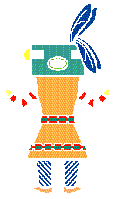
http://4directions.org/Community/lagunaadmin.home.html
P.O. Box 207
Laguna, NM 87206
Phone: 505-552-6008
Fax: 505-552-6398
Gill Sanchez
Karen Blazer
The 4Directions Schools
Ahfachkee Day School
Star Route - Box 40
Clewiston, FL 33440
Phone: 941-983-6348
Fax: 941-983-6535
Martin J. Coyle, Superintendent/Principal
Donna Dunkel, Site Coordinator
email: dunkelnm@fau.campus.mci
Neil Coady
e-mail: coadyn@mail.firn.edu
Dilcon Boarding School
HC 63 Box G
Winslow, AZ 86047
Phone: 520-657-3287 Hm: 520-289-4903 Fax: 520-657-3211
Richard Torralba, Principal
Carolyn Pecotte, Assistant Principal
email: carolyn.pecotte@enan.unm.edu
Fond du Lac Education Division
1696 Big Lake Road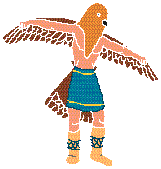
Cloquet, MN 55720
Phone: 218-879-0241
Fax: 218-879-0007
Richard Murto, Technical Coordinator
e-mail: rich@asab.fdl.cc.mn.us
Michael Rabideaux, Superintendent
Hannahville Indian School
N14911 Hannahville B1 Road
Wilson, MI 49896
Phone: 906-466-2959
Fax: 906-466-2556
Tom Miller, Superintendent
William Boda, Assistant Principal
Brenda Gerber, Tech. Coordinator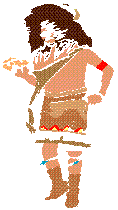
e-mail: bgerber@up.net
Indian Island School
P.O. Box 566
#1 River Road
Old Town, Maine 04468
Phone: 207-827-4285
Fax: 207-827-3599
Linda McLeod, Coordinator
e-mail: linda.mcleod@enan.unm.edu
Sister Janet Campbell, Principal
e-mail: sisterj@atlsysnet.com
Eric Randall, parent and
Technical Support
e-mail: eric@atlsysnet.com
School
e-mail: iis@atlsysnet.com
Indian Township School
Box 9
Peter Dana Point
Princeton, Maine 04668
Phone: 207-796-2362
Ralph Shannon, Principal
email: ralph.shannon@enan.unm.edu
Carol Letourneau,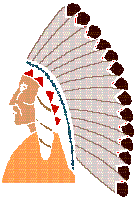
Title I/Technology Coordinator
email: carol.letourneau@enan.edu
Laguna Elementary School
P.O. Box 191
Laguna, New Mexico 87026
Phone: 505-552-9200
Fax: 505-552-7294
Gerald Kie, Principal
Karen Antonio, Education Technician
Laguna Middle School
P.O. Box 268
Laguna, New Mexico 87026
Phone: 505-552-9091
Fax: 505-552-6466
Nicholas Cheromiah, Principal
Denise Wilson, Tech. Specialist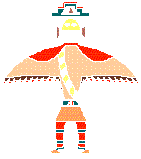
Lummi Tribal School
2530 Kwina Road
Bellingham, WA 98226
Phone: 360-384-2293
Barbara Grote, Title I Teacher
email: bgrote@nas.com
Quileute Tribal School
Old Coast Guard Station
P.O. Box 39
La Push, WA 98350
Phone: 360-374-2061
Fax: 360-374-9608
Sherman Black, Personnel Manager
e-mail: swblack@aol.com
Frank S. Hanson, Ed. Specialist
Seba Dalkai School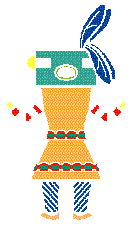
H-C-63 Box H
Winslow, AZ 86047
Phone: 520-657-3208
Dr. Kyril Calsoyas, Principal
Standing Rock Community School
P.O. Box 372
Fort Yates, ND 58538
Phone: 701-854-3865 High School
Phone: 701-854-3461 Elementary School
Gayleen Yellow Fat, Principal- Elementary School
Tim Krahler, Principal - High School
Takini School
HC 77, Box 537
Howes, SD 57748
Phone: 605-538-4399; Fax: 605-538-4315; Dr. Mary Ann Bowman, Principal-
Elementary School Judi Ami, Superintendent/Principal- High School
Deb Gropper, Computer Center Coordinator Val Hlavka, Computer
Coordinator
Contact: Bob Isaacson <isaacson@busboy.sped.ukans.edu>
ESL Methods Workshop Roy E. Howard, Ph.D.
Gallup Graduate StudiesCenter Western New Mexico University
Article about the presentations
| Teacher Development in ESL Indian
Education | September
| October | November
| | November | December
| January -February | March
-M ay |
Consulting | Cantos Para
Todos | Adornos Mariana
| Howard Piano Service | Janeen's Embroidery | Carlene's
Graphic Design | Howard Family
| Milagro Band |
Romero Band | Strings
|








